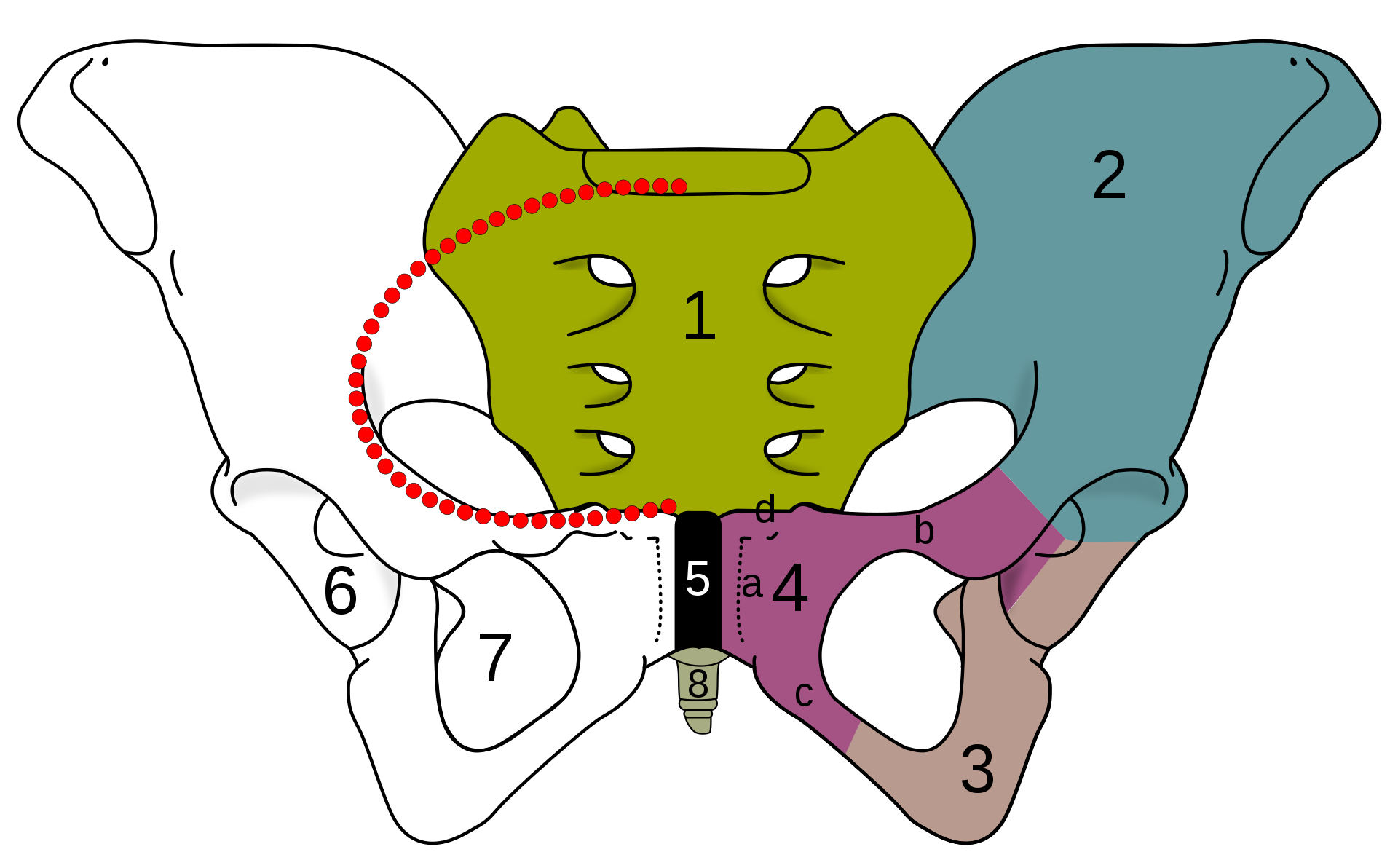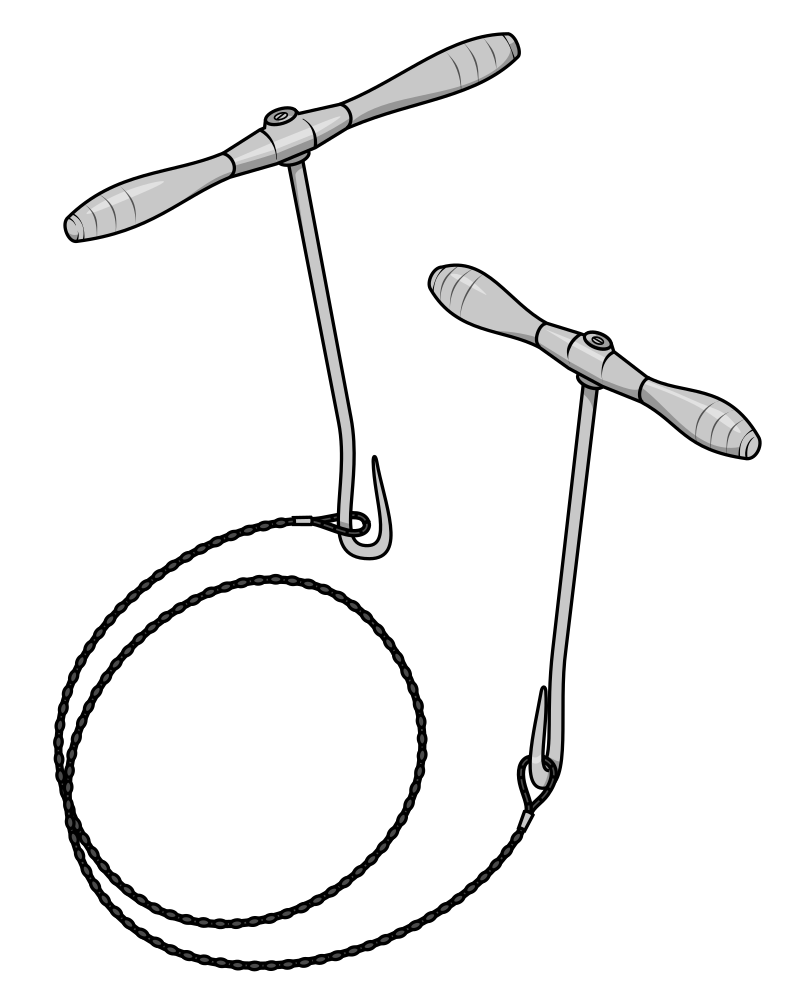When I started researching “why were chainsaws invented”, I didn’t expect to be mind-blown.
I thought it would be something like making the tree felling more efficient, but boy was I wrong.
Why were chainsaws invented?
Chainsaws were invented to help in childbirth.
The first chainsaw didn’t look anything like the modern ones.
It was more like a large knife with a chain on it.
If the baby was “too big” or “got stuck” during childbirth, a hand-cranked chainsaw with fine cutting teeth was used to cut through her cartilage and ligaments to get the baby out.
Before cesarean sections were commonly used, which was around 1940, there wasn’t another way to deliver babies other than the birth canal. And if any problems arose, using this “chainsaw” was necessary.
What did the first chainsaw look like?
The first medical chainsaw was called osteotome.
Notice how it doesn’t look like anything close to the modern-day ones.
The so-called “flexible saw” consisted of a serrated link chain held between two wooden handles. It didn’t have a motor, so the chain had to be moved by a hand crank.

Who invented the chainsaw?
The original chainsaw was invented and used by two Scottish doctors James Jeffray and John Aitken in the 1780s.
The main purpose of the invention was to perform a surgery called symphysiotomy, but it was also used for other medical procedures, such as:
- Removing diseased bone
- Cutting out infected flesh
- Amputating limbs
It was first illustrated in Aitken’s book Principles of Midwifery, or Peueperal Medicine, in the context of a pelvitomy.
The other doctor, Jeffray also reported having conceived the idea of a saw “with joints like the chain of a watch”. But he was not able to have it produced until 1790. He then occasionally lent it out to other surgeons.
Jeffray explained that the chain saw would allow a smaller wound and protect the adjacent muscles, nerves, and veins.
Chainsaws used for childbirth
The new invention’s main use case was to perform a surgical procedure known as symphysiotomy.
It is defined as “an outdated procedure in which the cartilage of the pubic symphysis is divided to widen the pelvis, allowing childbirth when there is a mechanical problem.”
To put it simply, when the baby was “too big” or “stuck”, they had to remove the pelvic bone to make the space wider.
Possible problems that necessitated chainsaw intervention in childbirth:
- Breech birth – when the baby is coming out feet first
- Shoulders stuck – a dangerous position for both mom and baby
- The baby’s head failing to transition through the birth canal – can happen for various reasons

What’s worse, the procedure was originally done without anesthesia and could include the breaking of bones. With the introduction of anesthesia in 1846, the procedure was used more frequently.
Nowadays, Symphysiotomy isn’t performed in developed countries. However, the former surgery is still used in many “developing countries”, where they can’t perform a c-section.
The disturbing thing is, it was actually continued in Ireland until not so long ago. You can read more about it in Guardian’s article.
Many women who have undergone the surgery were unable to walk after childbirth and with other lifelong consequences. It was replaced by the Cesarean section. Instead of attempting to widen the pelvis, a comparatively smaller and less intrusive abdominal incision is made to retrieve the baby.
When did they stop using chainsaws for childbirth?
The medical chainsaw in the West continued to be used in childbirth into the late 1800s. Though it was improved upon in the 1700s.
However, it’s said to still sometimes be used in parts of the world when c-section isn’t possible.
Another use for both of these saws was for amputating limbs, along with deceased flesh and bones.
Though the Gigli saw mostly overtook the use of the original medical chainsaw.

The first wood-cutting chainsaw
Now to the less disturbing part – the first chainsaw for forestry and logging work.
The first portable chainsaw was developed and patented in 1918 by Canadian millwright James Shand.
Surprisingly enough, the first chainsaw wasn’t a gas-powered one, but electric.
It was brought to market in 1926, weighed 105 lbs (48 kg), and required two people for it to be used.
After Shand allowed his rights to lapse in 1930, his invention was further developed by what later became the German company Festo in 1933. The same company is now operating as Festool and produces portable power tools.
Joseph Buford Cox and Andreas Stihl were also important contributors to the modern chainsaw. Andreas Stihl patented and developed an electric chainsaw for use on bucking sites in 1926 and a gas-powered chainsaw in 1929. He also founded the Stihl company to mass-produce chainsaws.
Note: log-bucking is the process of cutting a felled and delimbed tree into logs.

But the first gas-powered chainsaw wasn’t made by Stihl. Emil Lerp, who was the founder of Dolmar beat them when he developed the first gas-powered chainsaw to be mass-produced in 1927.
Chainsaws during World War II
The supply of German chainsaws to North America was interrupted by WWII, so new manufacturers emerged. A few of them are:
- Industrial Engineering Ltd (IEL) – the forerunner of Pioneer Saws Ltd
- Outboard Marine Corporation – the oldest manufacturer of chainsaws in North America
Claude Poulan was supervising German prisoners cutting pulpwood in East Texas in 1944. He used an old truck fender to guide the chain. This was an important milestone in the development of chainsaws. Thanks to this “bow guide”, chainsaws could now be used by a single person for the first time.
Another company to start producing chainsaws in North America was McCulloch. Starting in 1948, their early models were heavy, two-person devices with long bars. They were often so heavy, that they had wheels like dragsaws.

Chainsaws after World War II
After WWII, chainsaws became lighter with the improvements in aluminum and engine design. This allowed one person to carry them, instead of two, which led to the replacement of man-powered saws in forestry.
Nowadays, chainsaws are made in many sizes. From small electric ones, intended for home and garden use, to large “lumberjack” ones.
Fun fact: Why were chainsaws invented went viral on TikTok
Chances are, that if you searched for “why were chainsaws invented” it was because you’ve seen it on social media, more specifically TikTok.
It went viral last year, and now everyone’s talking about it.
Final thoughts
So now you know more about the invention of chainsaws. Let me know in the comments what you think about it.
